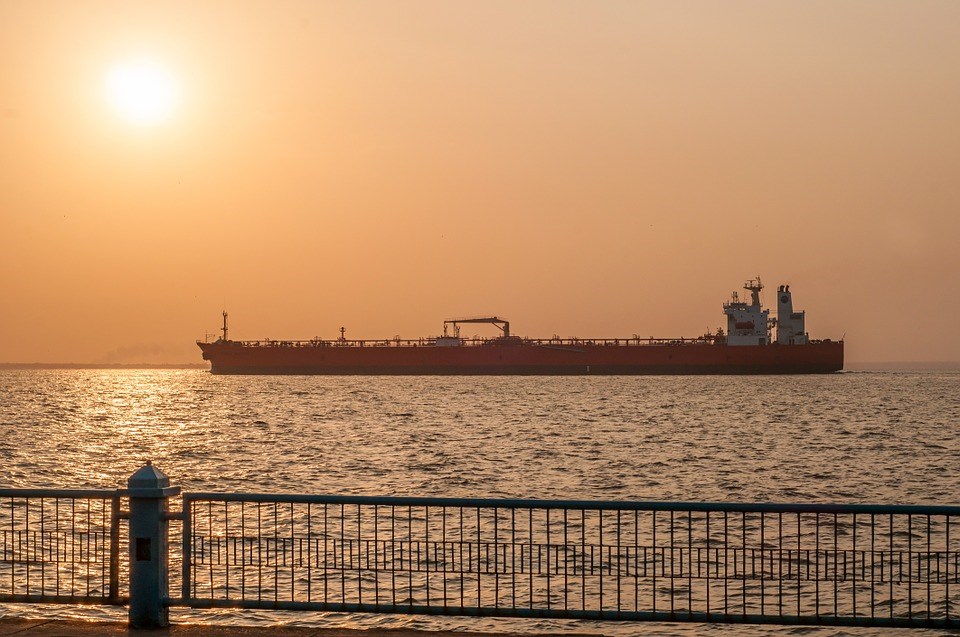Last year, Knowledge Network featured the documentary Freightened: The Real Price of Shipping by Polar Star Films, in which Cicero is quoted: “There are three kinds of people: the living, the dead and those at sea.”
From where do all the products we take for granted come?
Shoes from China. Blouse from Indonesia. Dress from Bangladesh. They all add up to a remarkably inexpensive outfit and yet these items have travelled halfway around the world to get to us.
A staggering 60,000 vessels constantly sail the world’s shipping lanes, lighting up our watery planet like a live circuit board. They are the bloodflow that supplies seven billion of us with our necessities as well as feeding our insatiable appetites.
Each vessel carries roughly 10,000 steel containers at a time. Cargo includes foods and grains, garments and footwear, furniture, chemicals, machinery, motor vehicles and military vehicles, liquid petroleum products, coal, ore and more.
As much as 90% of everything we consume comes in a shipping container and yet this business remains largely obscure while its hidden costs are far-reaching.
Modern-day freighters no longer fit in traditional city harbours. Moved out of the public’s eye and, according to journalist Rose George, with alarmingly low inspection rates (only 5% of containers shipped to U.S. ports are physically inspected, with percentages even lower in Europe), it’s no wonder maritime shipping has enabled the illegal weapons trade to prosper.
Vessels consume as much as 200 tonnes of fuel per day. To remain competitive, then, shipping uses the dirtiest oil on the planet, the bottom-of-the-barrel leftover grade that no other industry will touch. The use of such fuel in shipping is so large, in fact, that if added to the list of the world’s most polluting countries, it would come in sixth place, ahead of Germany.
Additionally, the industry contributes 2.8 % global emissions of greenhouse gases, its sewage has created 400 oceanic dead zones, its ever-increasing underwater noise levels threaten fin and blue whales, and its ballast water discharges spread invasive species, all the while relying on modern-day slave labour.
According to the International Transport Workers’ Federation (ITF), seafarers are routinely exhausted, many working more than 85 hours a week as modern crews have been reduced to as few as 13 men. Being abandoned on ship for months without pay is commonplace, as is inadequate cold weather gear. It is not about safety but commercial pressures. Crew wages are the easiest thing to cut.
More than 2,000 seafarers are lost at sea each year — that’s three vessels’ worth every week — according to the ITF. Yet when tragedies happen, unlike with the aviation industry, rescues or salvages are hardly ever undertaken (the loss is considered part of doing business), and official reporting can take years, if it happens at all.
The United Nations’ International Maritime Organization website, states its global mandate is “safe, secure and efficient shipping on clean oceans.” The IMO claims to pursue that mandate by adopting international maritime rules and standards to be enforced by governments in their various jurisdictions.
In reality, the industry is plagued by the practice of flying flags of convenience and these FOC have no relation to the vessel, its owner, the route or the crew. Nearly 70% of the global fleet now fly an FOC, enabling ship owners to avoid strict labour and environmental laws that might be applied by their home country. Most notorious for issuing FOC are Liberia, Panama and landlocked Mongolia.
The ITF believes that if the shipping industry were a national system with a national employment group, paying attractive salaries, it would not exploit developing nations for a cheap source of labour. The shipping industry runs in a race to the bottom on seafarers’ pay and conditions, pleading special circumstances whenever government or the ITF seeks to prevent these blatant injustices.
Even more alarming is the rate of piracy (e.g., off the Somali coast). Last year, the number of attacks on seafarers was higher than violent assaults in South Africa, which has the highest level of crime in the world.
Finally, vessels owned by developed nations that pass their “due date” and should be sold for scrap value, are instead purchased by developing nations too poor to afford retrofits and adequate maintenance. These make up the majority of vessels lost at sea. Alternatively, they become migrant vessels for refugees.
Melissa Chaun of Port Moody is an ecologist with a passion for all things sustainable. She is events co-ordinator with the Rivershed Society of BC and volunteers on various city committees. Her column runs monthly.
•••••
WHAT CAN YOU DO?
• Make your money matter. Buy ethically made Canadian products from local businesses, consigned items and high-quality durable products. Avoid trendy commodities that are made overseas, often of inferior, even toxic, materials and designed with obsolescence in mind.
• Make your voice heard. Write to Canada’s ambassador and permanent representative to the United Nations, Marc-André Blanchard ([email protected]) and ask him what Canada is doing to address the human rights and environmental atrocities perpetuated by the global shipping industry.
• Put your heart into action. Founded in 1856, the Mission to Seafarers (missiontoseafarers.ca) is a worldwide Anglican outreach ministry, with a Vancouver chapter providing year-round assistance to help seafarers with social isolation and labour and human rights complaints. At Christmas, the group delivers hundreds of gifts to more than a dozen vessels anchored in English Bay.
• Build awareness. The ITF website explains the issues. Visit itfseafarers.org/inside.cfm for more information and share what you’ve learned with your network.



